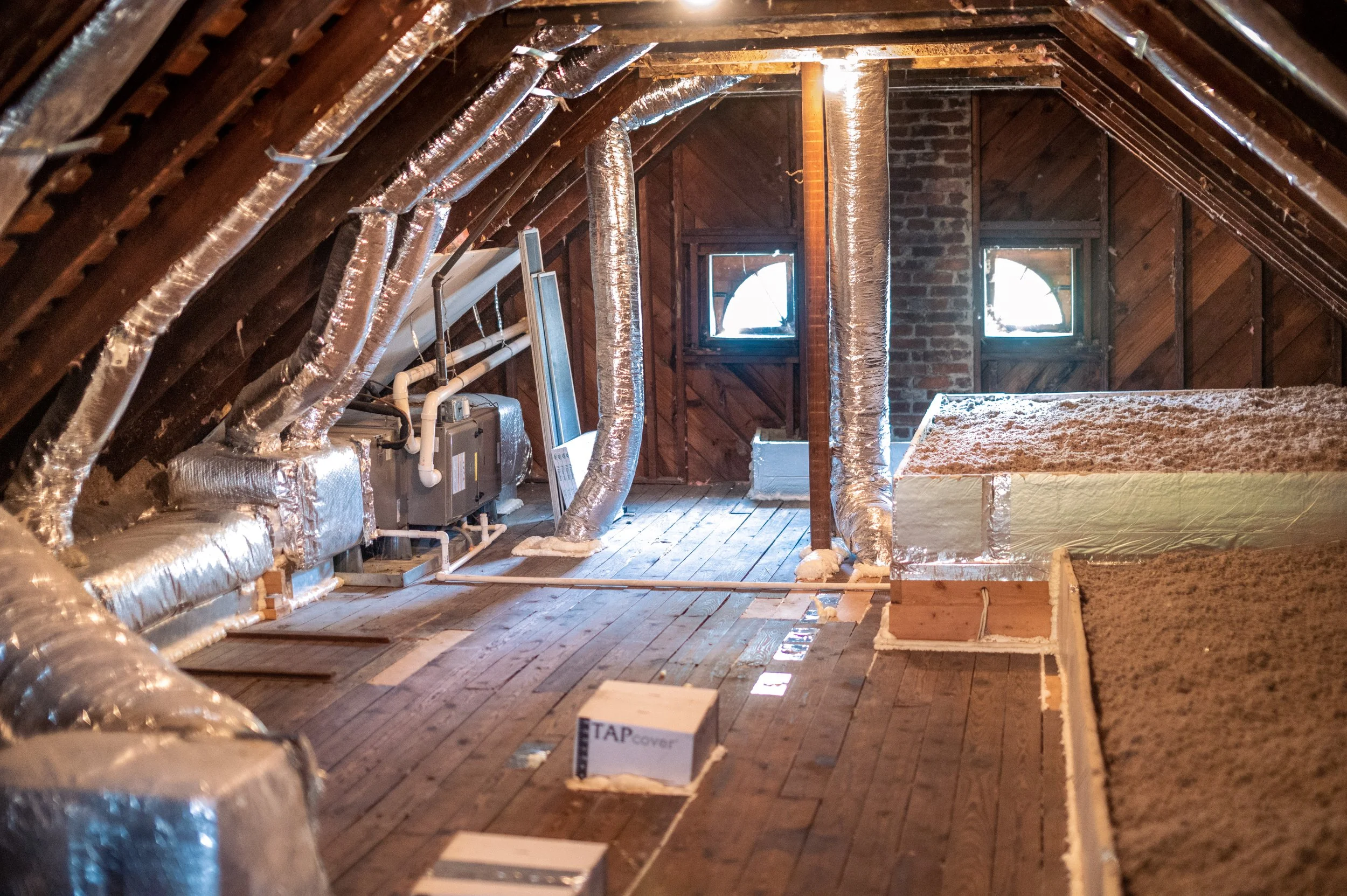Attic Layout: Traditional or Finished?
What’s The Difference?
When it comes to attics in residential homes, there are two main types: traditional attics and finished attics. Traditional attics are typically used for storage purposes and are often unfinished spaces with exposed insulation, rafters, and other structural elements. Homeowners usually access traditional attics through a pull-down ladder or a small hatch. Sometimes these attics aren’t very large and can be described as “scuttles”.
On the other hand, finished attics have been renovated or remodeled to become fully functional living spaces. Finished attics may include features such as drywall ceilings, flooring, windows, and sometimes even heating and cooling systems. These attics are designed to be used as bedrooms, home offices, playrooms, or any other type of living space that a homeowner may need.
One of the main differences between traditional and finished attics is the level of insulation and comfort they provide. Finished attics are usually climate-controlled and have flooring, ceilings and walls making them more suitable for conventional use. Traditional attics, being unfinished, are typically not suited for conventional use as you can see the insulation, rafters, and beams within the space. These unfinished attics are typically only used for storage of items that are not needed often. Finished attics add significant value to a home compared to traditional attics due to the extra livable square footage they provide however a home with new insulation and a properly done traditional attic can also increase your home’s value.
What are the insulation differences?
In the realm of residential insulation, the method chosen for attics can significantly impact a home's energy efficiency. Unfinished attics are commonly insulated with cellulose insulation due to its cost-effectiveness and ability to fill in tight spaces. Cellulose insulation, made from recycled paper products treated with flame-retardant chemicals, offers a sustainable option for insulating unfinished attics. This is our preferred method because it also allows us to maintain some storage space within your attic but while insulating crucial areas.
On the other hand, finished attics often use spray foam insulation for its ability to stick to the surface it is sprayed on such as the rafters. Spray foam insulation expands upon application, filling all gaps and crevices to create a complete thermal barrier. This allows for items such as drywall to still be installed after the spray foam to begin converting the attic into a finished space.
While cellulose insulation may suffice for unfinished attics by providing a high level of insulation, spray foam insulation emerges as the preferred choice for finished attics where maximum energy efficiency and air quality are desired. The decision between cellulose insulation and spray foam insulation ultimately depends on the attic's status, budget considerations, and desired level of performance in terms of insulation and air-sealing properties. Although we do not do large attic spray foam jobs, we can make a recommendation on what would be best for your home and offer insight into each option. If you decide for a full attic spray foam job, we have contractors that we work with to complete that scope of work.
It all starts with the home energy audit which you can schedule for free by clicking the button above or below!


